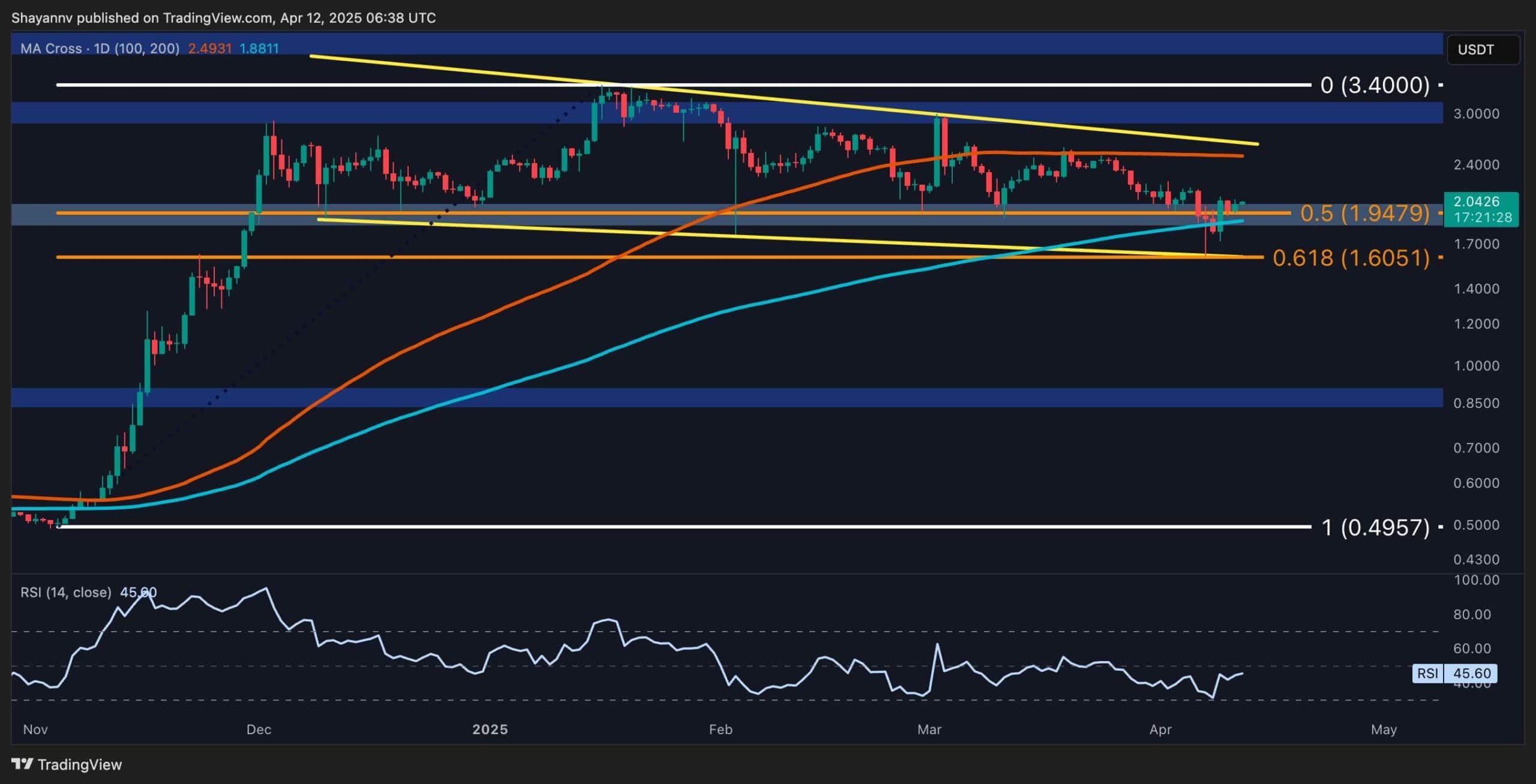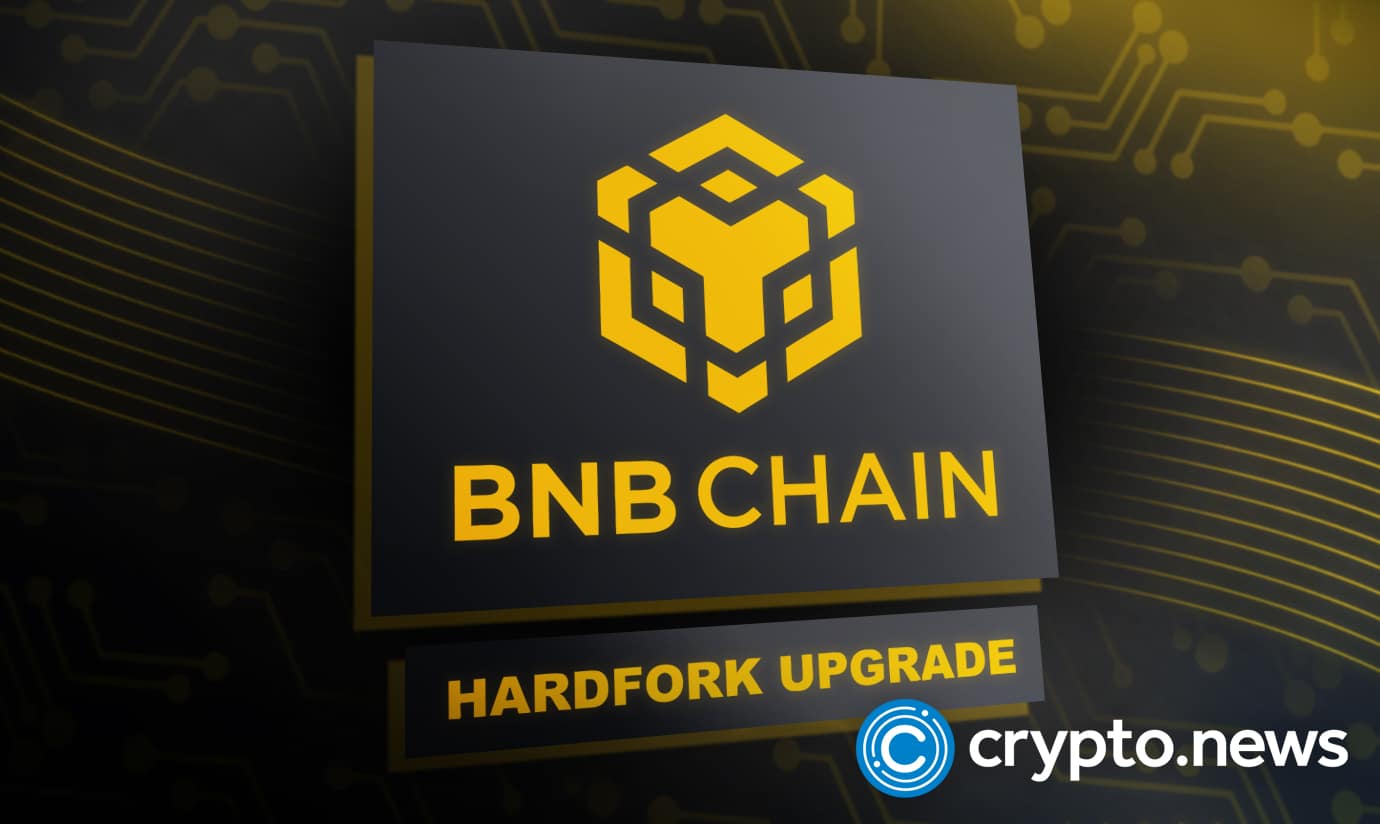
Ripple’s decline has temporarily halted at the 200-day moving average, triggering a slight rebound. However, weak market participation and low momentum suggest a high probability of continued consolidation and short-term retracements. XRP Price Analysis By Shayan The Daily Chart Ripple’s recent impulsive decline has been paused at a significant confluence of support levels, including the 200-day moving average at $1.8, the 0.5–0.618 Fibonacci retracement zone, and the lower boundary of a descending wedge pattern. This zone has acted as a key demand region, temporarily halting the downtrend. Moreover, the emergence of a bullish divergence between the RSI and price action further supports the possibility of a short-term rebound, potentially targeting the wedge’s upper boundary near the 100-day MA at $2.5. However, the broader market environment remains characterised by low activity and weak momentum, suggesting that XRP is likely to continue oscillating within the wedge pattern until a decisive breakout occurs. A valid breakout, either above or below the wedge, could result in significant volatility and liquidation cascades, driving an impulsive move in the breakout’s direction. Source: TradingView The 4-Hour Chart On the lower timeframe, XRP initially broke below both the descending wedge and expanding wedge patterns, triggering a wave of fear and suggesting a bearish continuation. However, this breakdown quickly turned into a false breakout, forming a bear trap as the price bounced back above the broken support levels. Since then, XRP has been gradually retracing toward its prior swing high of $2.2. A successful breach and close above this level would mark a bullish market structure shift, potentially opening the path toward the $2.5 resistance zone. Conversely, failure to break above $2.2 would reaffirm the existing bearish structure, making further downside in the medium term more probable. Source: TradingView The post Watch These 2 Criticial XRP Levels This Week: Ripple Price Analysis appeared first on CryptoPotato .
Crypto Potato
You can visit the page to read the article.
Source: Crypto Potato
Disclaimer: The opinion expressed here is not investment advice – it is provided for informational purposes only. It does not necessarily reflect the opinion of BitMaden. Every investment and all trading involves risk, so you should always perform your own research prior to making decisions. We do not recommend investing money you cannot afford to lose.
Solana (SOL) Shows Potential for Bullish Momentum Amid Indecisive Market Dynamics
![Solana’s [SOL] resilience in the face of market uncertainty signals potential bullish momentum as recent trends favor buyers. Despite recent losses, Solana’s on-chain metrics and derivatives activity hint at a](/image/6802b06f3edbc.jpg)
Solana’s [SOL] resilience in the face of market uncertainty signals potential bullish momentum as recent trends favor buyers. Despite recent losses, Solana’s on-chain metrics and derivatives activity hint at a Crypto Potato

Can Quantum Computing Break Bitcoin? Project Eleven Puts It to the Test
Project Eleven, a quantum computing research organization, has announced the Q-Day Prize – a global challenge offering 1 Bitcoin to the first team or individual who can use Shor’s algorithm on a quantum computer to break part of an elliptic curve cryptographic (ECC) key. The competition began on April 16, 2025, and will run until April 5, 2026. The main objective is to assess the real-world risk that quantum computing poses to Bitcoin’s cryptographic security. The challenge specifically targets the Elliptic Curve Digital Signature Algorithm (ECDSA). Global Quantum Challenge According to Project Eleven’s tweet , more than 10 million Bitcoin addresses have exposed public keys, potentially putting an estimated 6.2 million BTC, worth approximately $500 billion, at risk if quantum computing capabilities continue to advance. The Q-Day Prize aims to move the discussion around quantum threats beyond theoretical speculation by encouraging a practical demonstration of vulnerability. Participants must run Shor’s algorithm solely on a quantum computer, without assistance from classical computing methods. Even breaking a few bits of a Bitcoin key would qualify as a valid proof-of-concept and could indicate that full key recovery is plausible with future technological improvements. Project Eleven stated that no real-world ECC key has ever been cracked to date. The initiative comes amid notable progress in the quantum computing sector. Google’s ‘Willow’ chip, for example, recently performed a computation in five minutes that would take traditional supercomputers an estimated 10 septillion years. Other firms, including IBM, Amazon, and Microsoft, have also made advancements in quantum hardware, and access to quantum processors is increasingly available via cloud services. PsiQuantum, another major player in the field, raised $750 million in early 2025, citing developments in photonic chip design and improvements to quantum algorithms such as Shor’s. While industry experts do not consider the quantum threat to Bitcoin to be imminent, Project Eleven’s initiative seeks to quantify that risk through open experimentation. The Great Quantum Debate The quantum computing debate isn’t new. Earlier this year, CryptoQuant identified it as an emerging risk, especially in areas like mining and private key protection. The debate reignited after a November NIST report warned that certain algorithms vulnerable to quantum attacks will be phased out within five years. While some voices, such as ‘Bitcoin Isaiah’ on X, advocate for urgent preparation, others like Blockstream CEO Adam Back maintain that Bitcoin’s encryption should hold firm until around 2035. The post Can Quantum Computing Break Bitcoin? Project Eleven Puts It to the Test appeared first on CryptoPotato . Crypto Potato











